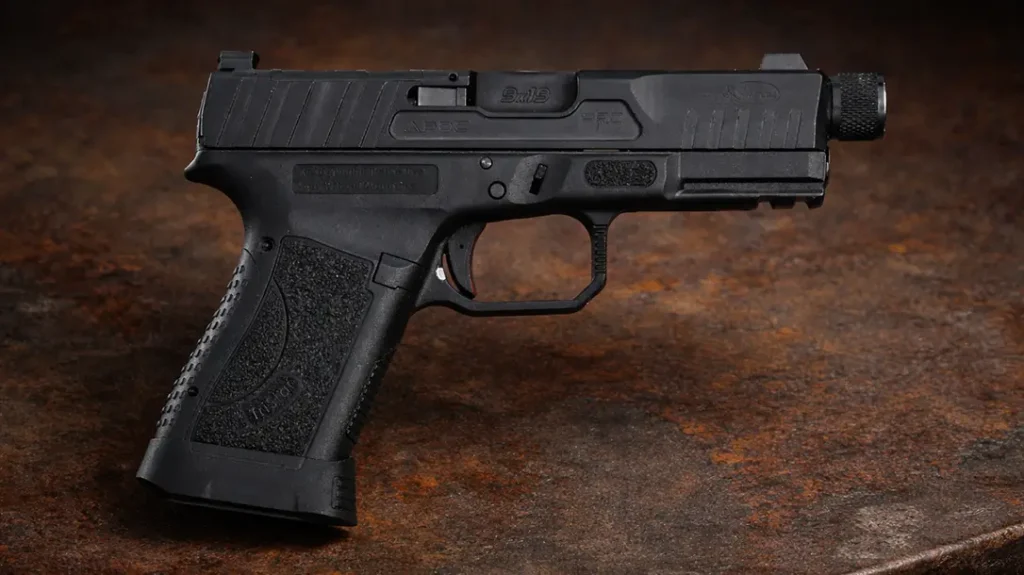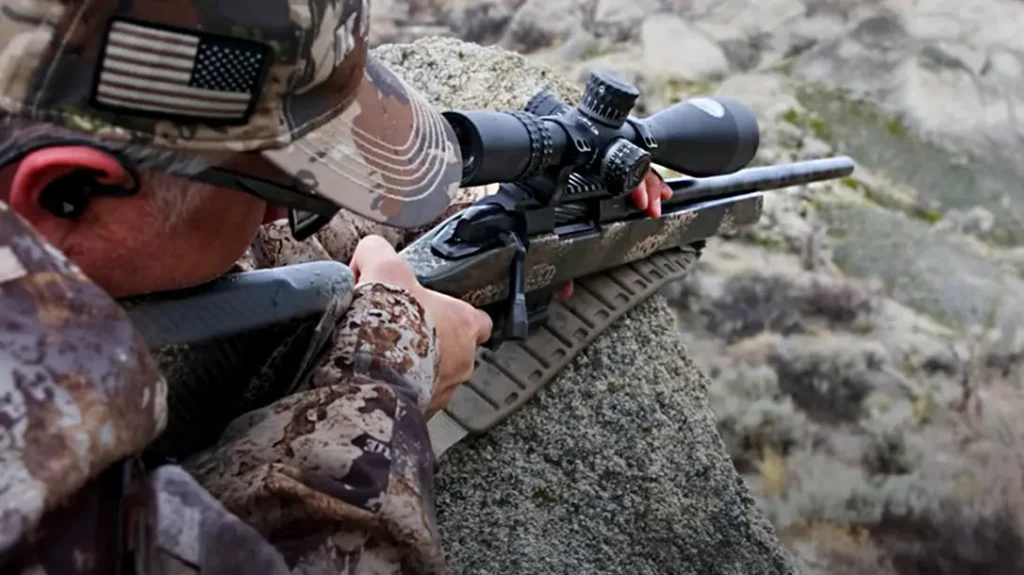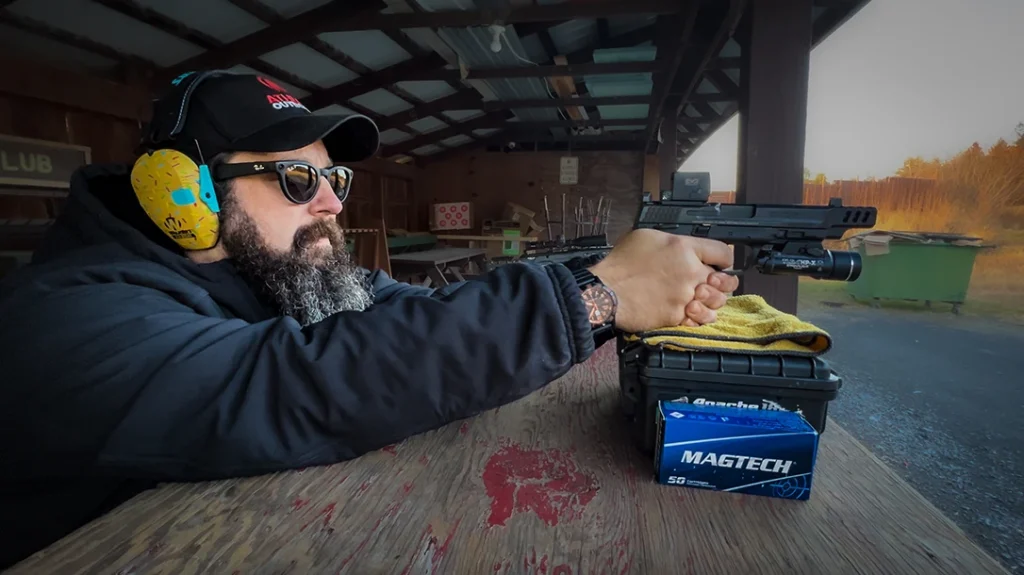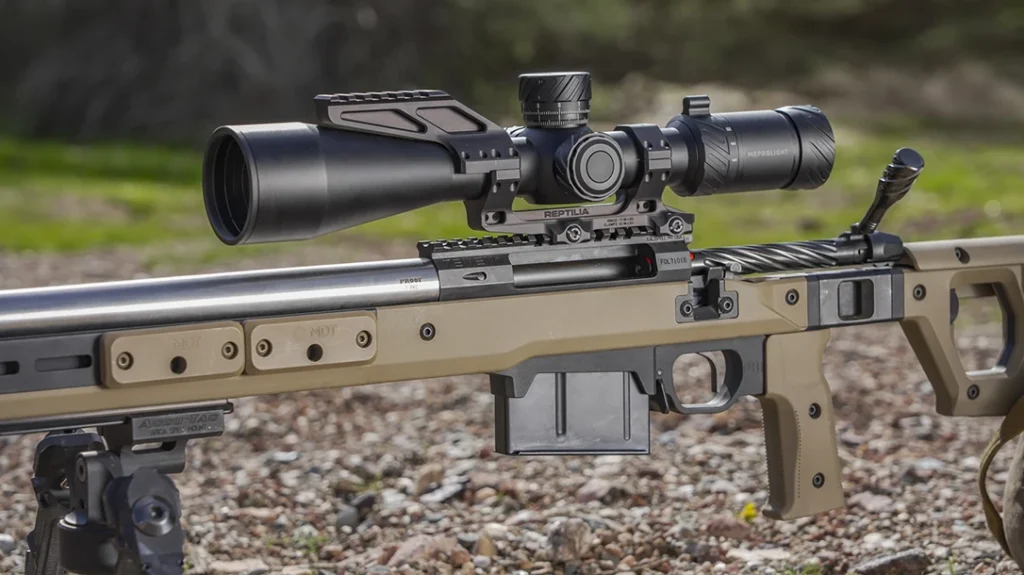The Red Army was officially formed in January of 1918. During its first decade, it was armed with legacy guns of the fallen Russian Empire, including Nagant M1895 revolvers. Suffice it to say, Soviet pistols were well behind the times.
The New Era of Soviet Pistols
Recognizing the need for a more modern service sidearm, the Red Army initiated trials for a new semi-automatic pistol during the late 1920s. It eventually resulted in the adoption of the Tokarev TT pistol in 1931.

Advertisement — Continue Reading Below
After certain improvements, the TT was put into mass production in 1933. This version, produced in the millions in the USSR and elsewhere, is generally known as TT-33. However, due to insufficient production of the TT, Nagant revolvers were produced concurrently with the more modern pistols.

Advertisement — Continue Reading Below
The TT was a short-recoil-operated, locked-breech pistol with a Browning-type action. The hammer, spring and sear formed a single unit. The unit was easily removed during field disassembly, simplifying routine maintenance of the pistol. It used single-stack, eight-round magazines, with the magazine release button located at the base of the triggerguard.
It must be noted that the TT left a lot to be desired. As early as 1938, new trials were organized to find a better gun. The Main Automotive-Armored Tank Directorate (GABTU) requested a manual safety and a pencil-thin barrel. This was so the new gun could be fired through ports in armored cars and tanks. These ports were originally designed to accept thin Nagant barrels, and the TT’s slide was too big to fit in. Due to the breakout of World War II, these trials were abandoned; the Red Army fought the “Great Patriotic War” with both semi-automatic Tokarev TT pistols and Nagant M1895 revolvers.

Advertisement — Continue Reading Below
Soviet Pistols After The War
Wartime experience, which included a close and sometimes very personal familiarity with German pistols, resulted in a major change of thinking about the role and necessary features of a military pistol for the Soviet army. Another factor that played a major role in the development of new requirements for the next military pistol was the realistic prospect of World War III, with massive nuclear bombings and other such large-scale actions. As a result, pistols played a very minor role in both strategic and tactical doctrines of the Soviet army. Furthermore, Tokarev pistols, despite being relatively simple and powerful, showed significant deficiencies. Some of these were quite serious, such as the lack of a positive safety. Consequently, almost immediately after the war, the Artillery Department issued a new set of requirements for a military and police pistol.
These requirements asked for a compact double-action pistol of the “Walther PP type.” New pistols were to be submitted in three calibers. The calibers were .32 ACP (7.65mm Browning Short), .380 ACP (9x17mm Browning) and the new 9x18mm. The last of these had initially been developed just prior to the war and refined after by the designer Syomin. Apparently, this round was inspired by the German 9x18mm Ultra, which was designed in the mid-1930s to provide “acceptable maximum power” in simple, pocket-sized blowback pistols.
Firepower
The key reason for the increase in caliber when compared with the West’s 9x19mm rounds is unknown. The Soviet 9x18mm has a bullet diameter of 9.2 millimeters while most Western 9x19mm rounds have a bullet diameter of 9.02 millimeters. However, with the benefit of hindsight, we can assume that the reasons for such an increase were probably similar to those behind Soviet 82mm mortars. Those mortars were able to load and fire the slightly smaller German 81mm mortar bombs, but not vice versa.
Advertisement — Continue Reading Below
Also, while the Soviet army was ahead of many others in the request for a double-action pistol, it regressed somewhat in adopting a marginally powerful round in a weapon that in essence was a pocket-type pistol. Around the same time, many other armies, also looking for an increase in power, started to change their “weak” .32 ACP, .380 ACP or 7.65x20mm pistols to the more potent 9x19mm. The explanation for this, however, is rather simple. While most Western countries relied on full-power rifles (bolt action or semi-automatic) and submachine guns as a primary individual armament for the infantry, the new Soviet concept had no place for submachine guns, as the only primary arm of the infantry was the newly developed assault rifle.
Most Western pistols were also required to fire 9x19mm ammunition just to have commonality in ammunition with the standard-issue submachine guns; Soviet designers had no such requirements. By the late 1940s, the 9x18mm looked like it was good enough for a military pistol.
Makarov PM
Trials for a new pistol began in 1947. Many designs were submitted and tested, such as pistols from Baryshev, Rakov, Voevodin, Simonov and Makarov. Some designs were submitted in only one of the desired chamberings. Some, such as the Makarov design, in two, and a few in all three. At the same time, the army also tested a few larger machine pistols in 9x18mm that were intended as personal-defense weapons for certain officers and NCOs. In 1948, the first trials resulted in the selection of the Makarov pistol in 9x18mm as the next military sidearm for Soviet armed forces. However, it took three more years to refine its design before it was officially adopted in 1951 as the Pistolet Makarova, or PM.
Advertisement — Continue Reading Below

The blowback-operated PM used a fixed barrel. It was an all-steel design with a double-action trigger and an exposed hammer. In addition, the slide-mounted safety doubled as a decocker. Furthermore, the magazine release was located at the base, or heel, of the grip, and the gun used eight-round magazines.
Stechkin APS

Advertisement — Continue Reading Below
That same year, the Soviet army also adopted the 20-shot, select-fire Stechkin APS pistol in the same caliber. It was chosen over two similar machine pistols designed by the then-unknown Mikhail Kalashnikov and Voevodin (who designed several pistols just before the war). The Stechkin APS also used a fixed barrel and a double-action trigger. The three-position fire control selector offered safe, semi- and full-auto positions. It also forced the hammer to decock safely when gun was set on “safe.”
To provide controllable full-auto fire, the APS was also fitted with an inertia-type rate reducer. This was made in the form of a steel plunger that reciprocated up and down in the grip, just behind the magazine channel. When the pistol was fired in full-auto, the slide hit the plunger and forced it down against its spring at the end of its forward movement. At the same time, the hammer was held cocked by the automatic sear. Once the plunger completed its down-and-up cycle, it struck the sear and thus released the hammer to fire the next shot.
Advertisement — Continue Reading Below

However, unlike the Makarov PM, the Stechkin APS had a relatively short production life. Made only between 1951 and 1955, this gun turned out to be overly expensive and complicated to make. Furthermore, workers called it the “machinist’s worst nightmare.” Its wooden or plastic holster/shoulder stock was bulky and often cumbersome to carry. Many complaints from tank and APC crews were caused by the holster snagging on armored vehicles, especially during emergency exits. Most of the APS pistols were withdrawn from service and put into storage by the early 1960s. They were replaced either by Makarov pistols or Kalashnikov AKS/AKMS folding-stocked assault rifles.
Retired TT, Evolving Makarov

Advertisement — Continue Reading Below
Also, it should be noted that while the TT was declared obsolete in 1951, it remained among the inventory of Soviet pistols with the Red army until the early 1970s, and some rural militias carried these guns well into the 1980s.

The following decades saw the gradual evolution of Makarov pistols in continuing attempts to produce new pistols with fewer rejects and at lower cost. Most efforts concentrated on production technologies. Furthermore, by the 1980s, many parts that were initially made with machining and hand-fitting became precision castings that required minimal, if any, fitting. The 1980s also saw attempts to make PM pistols lighter with the introduction of aluminum alloy and polymer frames. Apparently, these pistols were less durable than steel-framed ones and development was terminated.
PSM
The last pistol to be mentioned here is the diminutive PSM. It was designed during the early 1970s as a deep-concealment pistol for KGB agents. It was also very thin (only 0.7 inches across its widest part) thanks in part to the safety arrangement, in that the lever was made flat with the slide and protruded rearwards, along with the hammer. The PSM also used single-stack magazines; a small finger rest and magazine release located at the heel of the grip. The sights were fixed. Early production pistols had very thin ribbed aluminum grip panels. These were found to be quite uncomfortable, and later were replaced with plastic wraparound grip panels.

Most importantly, the PSM fired a specially designed, bottlenecked 5.45x18mm cartridge that offered good penetration but poor stopping power. As a result, it was most often used as a general’s gun. There’s quite a list of cases where well-placed shots fired from PSM pistols failed to incapacitate or kill a target in a timely manner, including several very painful suicides.
























